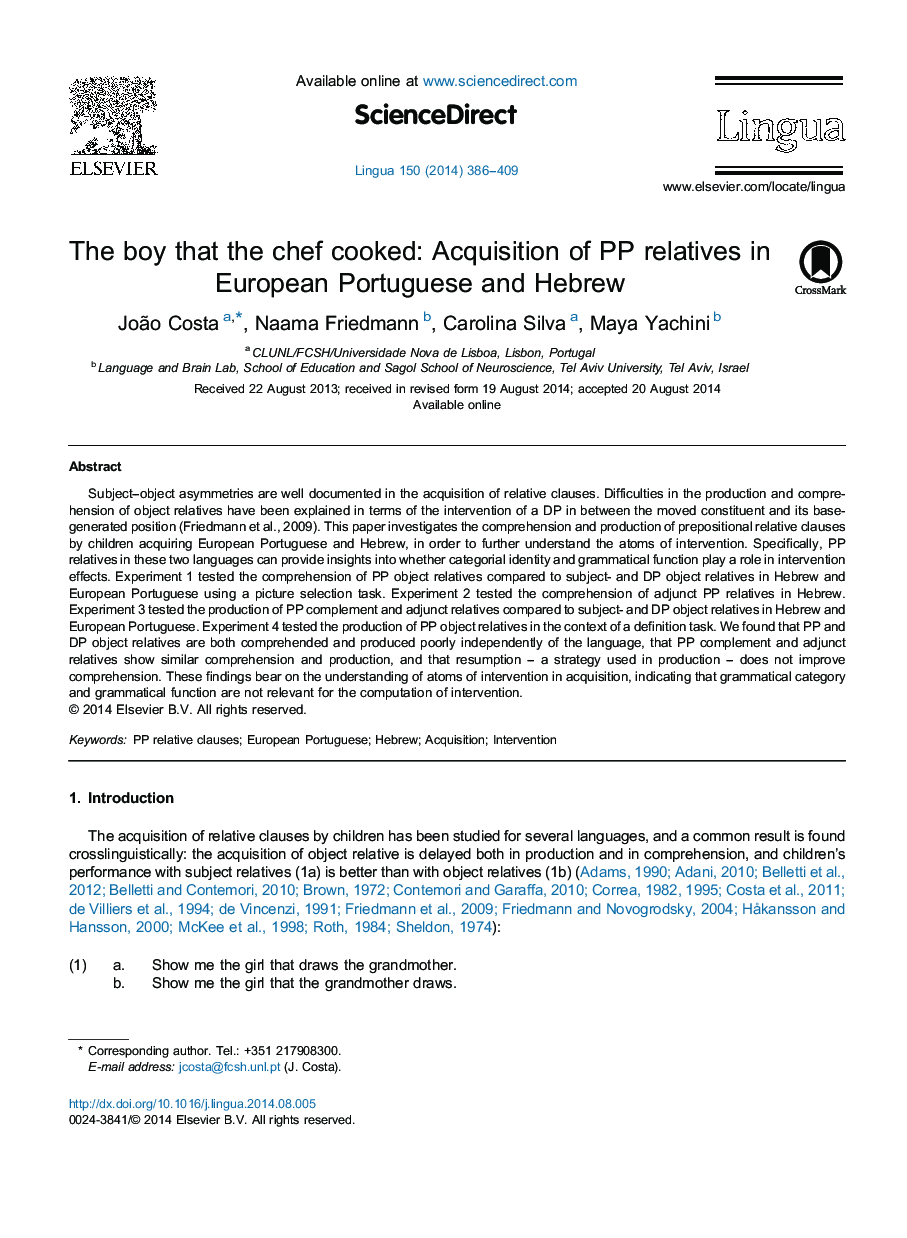| Article ID | Journal | Published Year | Pages | File Type |
|---|---|---|---|---|
| 7298521 | Lingua | 2014 | 24 Pages |
Abstract
Subject-object asymmetries are well documented in the acquisition of relative clauses. Difficulties in the production and comprehension of object relatives have been explained in terms of the intervention of a DP in between the moved constituent and its base-generated position (Friedmann et al., 2009). This paper investigates the comprehension and production of prepositional relative clauses by children acquiring European Portuguese and Hebrew, in order to further understand the atoms of intervention. Specifically, PP relatives in these two languages can provide insights into whether categorial identity and grammatical function play a role in intervention effects. Experiment 1 tested the comprehension of PP object relatives compared to subject- and DP object relatives in Hebrew and European Portuguese using a picture selection task. Experiment 2 tested the comprehension of adjunct PP relatives in Hebrew. Experiment 3 tested the production of PP complement and adjunct relatives compared to subject- and DP object relatives in Hebrew and European Portuguese. Experiment 4 tested the production of PP object relatives in the context of a definition task. We found that PP and DP object relatives are both comprehended and produced poorly independently of the language, that PP complement and adjunct relatives show similar comprehension and production, and that resumption - a strategy used in production - does not improve comprehension. These findings bear on the understanding of atoms of intervention in acquisition, indicating that grammatical category and grammatical function are not relevant for the computation of intervention.
Related Topics
Social Sciences and Humanities
Arts and Humanities
Language and Linguistics
Authors
João Costa, Naama Friedmann, Carolina Silva, Maya Yachini,
